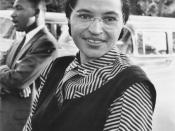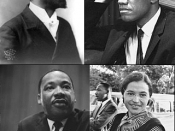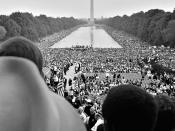In 1894, the US Supreme Court gave legal consent to state laws segregating black people and white people with its decision concerning the Plessey v Ferguson case. The decision stated that black and white should be separate but equal, meaning the same standard of facilities for both. In reality it legally enforced a state of affairs that assured that blacks would never be equal, and couldn't get equal treatment, status or opportunity in their own country.
During the Second World War, the black American Gi's realised that they were fighting for a democracy abroad, which they did not have at home. One black soldier vocalised the senselessness of their situation: "just carve on my tombstone, Here lies a Black man killed fighting a yellow man for the protection of a white man". Some took up draft resistance in protest. The refusal to comply with segregation laws within the military was punished with custody.
Returning to segregation at the end of the war caused the politicisation of many black Americans. The ensuing civil disobedience campaign, the non-violent resistance to the law, was one of the catalysts of the civil rights movement. It was this campaign that was the first to receive world - wide attention.
One of the first challenges to the Plessey v Ferguson laws was in 1954, when the NAACP contested the right of local school boards to run segregated schools in the brown v board of education case. The Supreme Court's unanimous verdict was that segregation in education would be illegal. However, by the end of 1956, there were still six southern states that refused to let black children attend schools with white children. One of these was Arkansas, who not only had not integrated their schools, but were resolutely preventing it. The governor of Arkansas used the...


